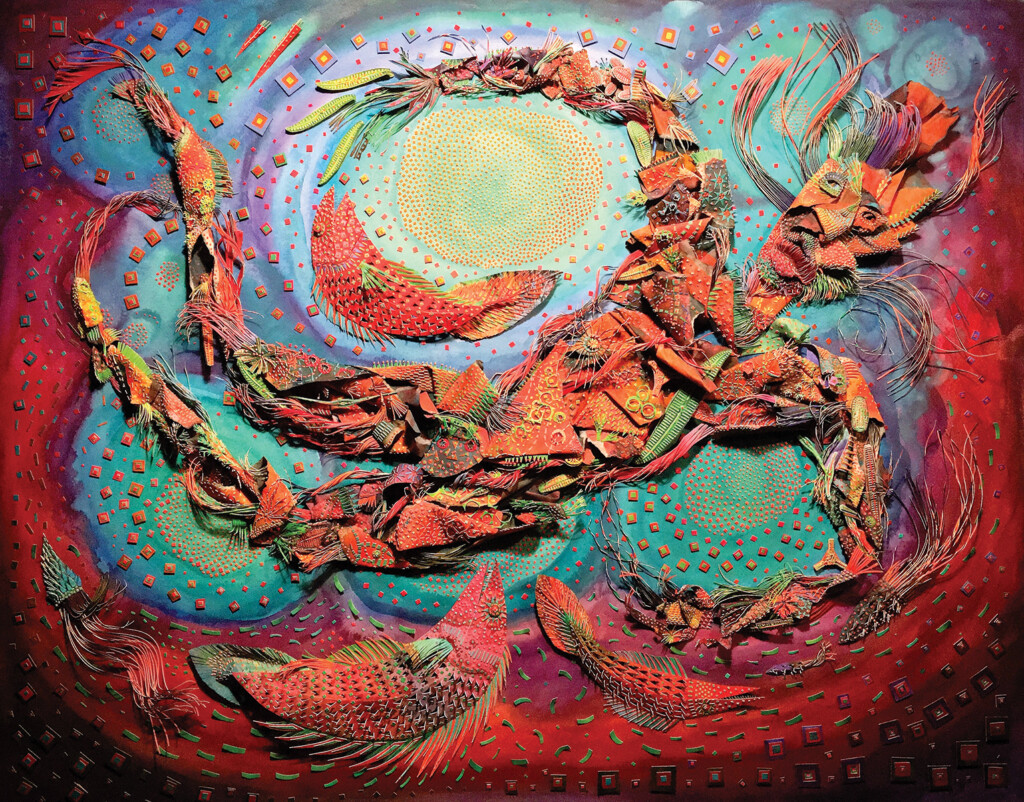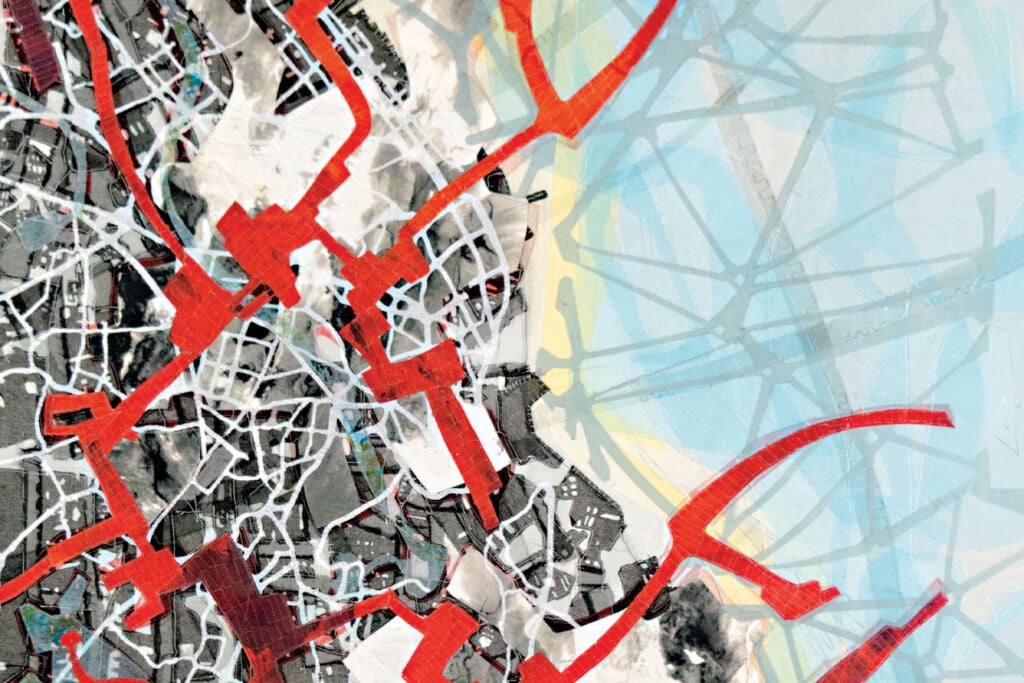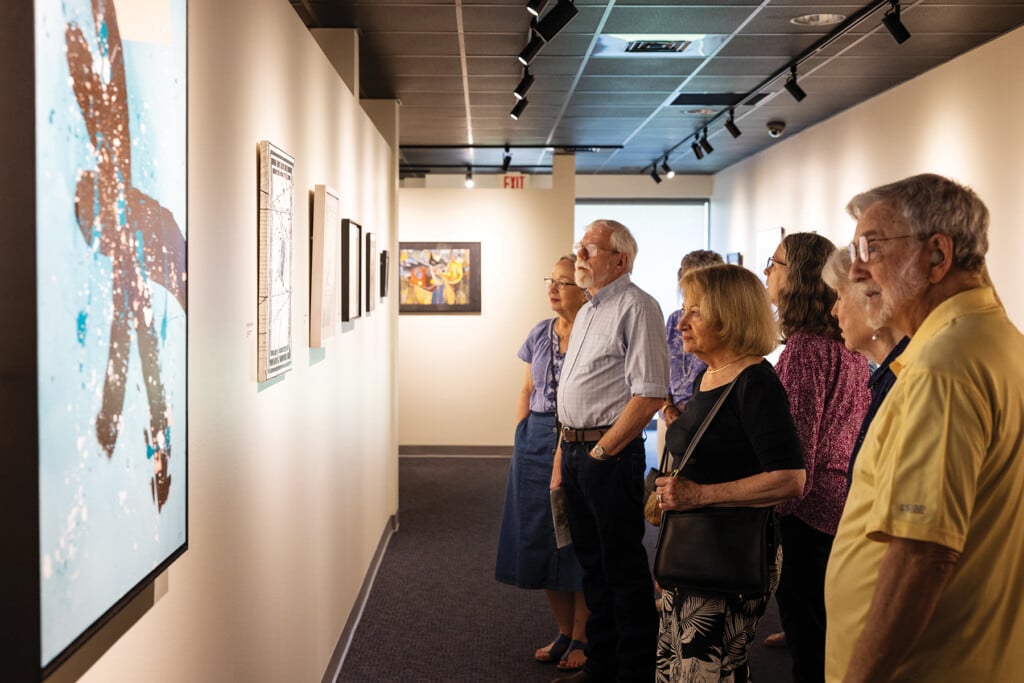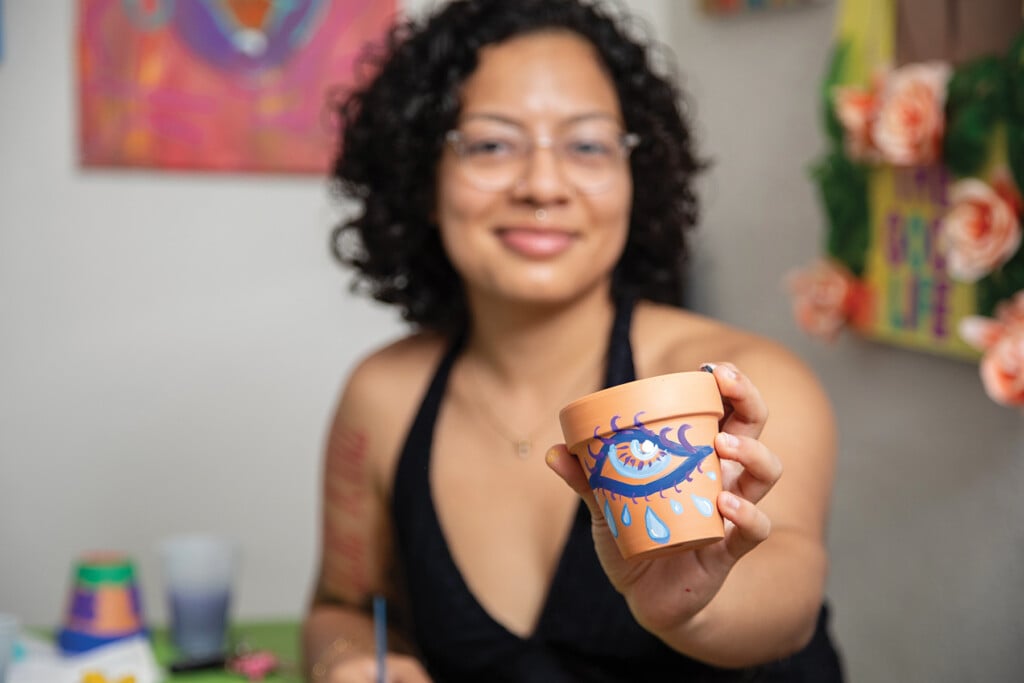Experiments in Magic
Artist Beth Appleton’s cut-paper creations throb with color and life

Sitting beneath a sprawling live oak, the figures of artist Beth Appleton and her husband, David Harbaugh, shimmer in the afternoon shadows. They seem a tableau made of many colors, different pieces that merge into form—much like the images that Appleton creates.
Renowned for her unique cut-paper assemblages, Beth Appleton is an internationally collected artist whose phantasmagorical images of animals, swaying trees, complicated mandalas, diatoms, and cubist-like portraits have been sought-after since 1989 when she first began to professionally “wield” an X-Acto knife on paper. Since then, the award-winning artist helped found the Gadsden Arts Center & Museum in Quincy and will be honored this year at the International Society for Experimental Artists in Orlando.
Yet Appleton had a busy and hard-working artistic life even before the public discovered that tiny bits of paper, arranged by the hundreds in brilliant spirals and scenes, were mesmerizing and needed to be on their walls.
“I’d come to Tallahassee from Ocala,” says Appleton, then a young FSU art student who had found herself thrilled by the colors and patterns she found in an aunt’s tiny roadside fruit and souvenir stand. “Art has always been in my life,” she says. “It is how I see the world. At FSU, I learned to experiment with many media—oils, found-object sculptures, pottery, metal soldering, and lost-wax casting.” Appleton still immerses herself in photography, video art, digital assemblages, and microscopy, which influence her cut-paper work.
But after graduation and five years of teaching art in public schools, Appleton and her husband, David, decided it was time for Beth to “go for it”—to establish a career as a professional artist. Beth would create the art. David would do the framing, transporting, and handling of all the other details of an art business. “Traveling back and forth across the country to outdoor art shows and exhibitions, we noticed that what really sold were the small cut-paper pieces.
I couldn’t make them fast enough.” The couple settled into a large farmhouse in Quincy where Appleton made art on five verdant acres and let her soul absorb the colors and charm of animals and nature. “I worked as a ‘cut-and-paste’ artist for the local Quincy paper, and David was its editor. But I also created a body of work that I began exhibiting in large venues in Sausalito, Miami, and Ann Arbor.” Later, the estuary near Apalachicola became her inspirational home, and her following grew.

Photos Courtesy of Beth Appleton
Today, sought-after by collectors and museum curators, Appleton’s art, each a slowly developed master work, is eagerly awaited—even by the artist herself.
“The creation of a new piece is intuitive,” she says, “and still holds awe and mystery for me. I love it when a viewer can glimpse an expanded universe, the illusion of worlds within worlds within my work.” But what is the actual process for turning simple bits of paper into art?
First, says Appleton, she gets out her journal. “I quickly jot down a word or a poem as I work. I remain flexible as the piece comes together, moving pieces around, trying out new ideas as I go.” She speaks of patterns that “swirl all around us, even inside us. The repetition in my work is innate, detached from my analytical self.” Appleton says that she’s always found inspiration in nature—the life of a diatom inside a water droplet has produced mesmerizing images. Her newest exhibition will lean heavily on the hurricanes which have visited Florida in recent years.
The mechanics of Appleton’s method are straightforward. She begins as a painter using heavy watercolor paper that she paints in brilliant colors on both sides. She then cuts the hundreds, perhaps thousands, of hand-painted squares, triangles, and circles … or minute images of frogs or flower buds … with the X-Acto knife. “I fold and paste layer upon layer to create these dimensional shapes before actually attaching them to the background—the last step.” Working at night is her favorite time for creation. She says, “Seven hours is my average.”
Yet time is an ephemeral thing for Appleton. “I never know how long a piece will take to complete. It may be weeks or months—a large piece may take a year to finish.” And today, at 75, the art world wishes Beth Appleton many more years of “wielding her X-Acto” and gifting the world with her tiny bits of magic.
Those who know Appleton’s unique body of work eagerly await her April 2025 exhibition at the LeMoyne Arts Center, where new and personally selected retrospective pieces will be on display.
Creative Exploration Exhibition Thursday, April 10 through May 10. See LeMoyne Arts for additional information and times. (850) 222-8800 lemoyne.org


